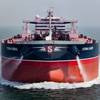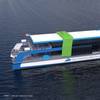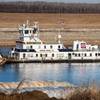The U.S. shipbuilding industry has not been too successful in the cruise market, but one American builder has found a comfortable niche in the trade, not only building ships, but marketing and operating them as well.
The "ships" are relatively small but they are well known in the U.S. and Canadian tourism markets and carry a high number of repeat passengers. Captain Luther H. Blount, 82, considered the father of adventure cruising, is also the founder of American Canadian Caribbean Line (ACCL), a cruise line that probably enjoys the highest repeat passenger rate in the entire cruise industry.
Blount established Blount Industries shipyard in 1949 after building a small catamaran out of old oil drums for the local oyster trade. Since then, he has built nearly 300 vessels, from tugs and ferries to dinner boats and pocket cruise liners. The most recent ship completed was 183-ft. Grand Mariner for ACCL while vessel No # 299, a composite catamaran generating a low wake, is already in the water.
Blount decided to enter the cruise trade in the early 1960s after taking friends and family on a number of overnight yacht trips along the New England coast. The success of these trips inspired him to design and build a small cruise vessel that wouldn't be too luxurious, but would be able to get its passengers close to the scenery.
ACCL was formed in 1966 and Blount developed and patented a unique bow ramp to allow passengers to disembark from his vessels right on to the beach. Another innovation on Blount ships is a retractable pilot house, which allows the boats to operate under low bridges that cross over many inland canals and rivers.
Although there are few frills on the ACCL boats, the adventure cruising aspect has drawn an inquisitive crowd of repeat passengers, leaving Blount with two thriving businesses. To these, he has recently added a third, Rentacruise, which leases and charters dinner and excursion vessels.
Last year the Blount yard finished hull #298, Grande Mariner. It is the second in a series of Grande Class ships the yard has built for ACCL and spent its first winter season cruising in Central America. Capable of accommodating 100 overnight guests, the boat is almost an exact replica of earlier built Grande Caribe.
Both vessels feature strengthened steel hulls and aluminum houses. Power is provided by two MAN diesels developing 710 hp for a service speed of about 10 knots while three Caterpillar 170 kW generator sets and a 100 kW Cummins provide auxiliary and emergency power.
The new pocket cruisers carry 6,094 gallons of potable water, but each also has two onboard water plants capable of providing 3,300 gallons of water per day. A fuel capacity of 10,770 gallons gives a cruising range of around 2,000 nautical miles.
"Grande Mariner literally winds through rivers with sheer walls of forest," said Blount. "It's a spectacular sight for passengers to experience. No other cruise line can navigate the areas that we do".
According to Blount, a first and all-time favorite cruise for his passengers is the Erie Canal/ Saguenay River Cruise in the U.S. Northeast. The Blount boats, in fact, can cruise between the East Coast and the Gulf Coast using American's system of rivers and inland canals.
Blount's latest design, an ultra low-wake catamaran, is targeted to America's growing commuter traffic. A prototype hull measuring 40 x 12 ft. has been produced using a composite of aluminum, fiberglass and polyurethane foam, which Blount says is lighter than comparable hulls built of Kevlar or carbon fiber. The aluminum truss-style subframe is encapsulated in variable-density foam layers and sealed in quadraxial E-glass and fire retardant resins.
"The resulting fuselage structure is extremely lightweight, yet stiff and strong," Blount asserts. The 5,200 lb. vessel is powered by two Mercury 250 hp engines for testing purposes.
Although Blount is targeting the catamaran to sheltered water commuter work, he is hoping larger composite boats will be allowed into the U.S. water transportation industry. Right now, composite construction is allowed in the U.S. for any vessel carrying up to 149 passengers under subchapter T regulations but not 150 passengers and over, which is covered by subchapter K regulations. However, the USCG is currently reviewing its rules on such construction and several U.S. builders, Blount included, hope to see something accomplished before the end of this year.
"A lot of questions will be worked out best by building a number of boats then trying them out," said Blount, who noted the use of composites for fast ferries outside the U.S. has become relatively popular. "I can build a 75-ft., 149-passenger catamaran for about a million dollars less than if I used straight aluminum, and I think composites can be used for K boats," he remarked. "It's a process that will require a little experience, but it will come."
Luther Blount is still very much at the helm of his highly successful cruise and boatbuilding companies. He employs more than 150 people in what is termed "an old-fashioned, hard-working and informal atmosphere," in New England, and can usually be seen cycling through his shipyard, personally supervising the latest projects.
His 300th boat will be delivered this year, and it will complete a circle for the innovative US builder. On the ways is a 105-ft. oyster boat, the modern-day equivalent to Blount's very first vessel, the little catamaran made out of discarded oil drums over 50 years ago.-J.L. Shaw
April 2025
 Read the Magazine
Read the Magazine

 Read the Magazine
Read the Magazine
This issue sponsored by:

Modernizing Mariner Credentialing: A Maritime Workforce Imperative
Subscribe for
Maritime Reporter E-News
Maritime Reporter E-News is the maritime industry's largest circulation and most authoritative ENews Service, delivered to your Email five times per week












